“Acropolis” (Greek: Ακρόπολη) means "highest city" in Greek, literally city on the extremity and is usually translated into English as “Citadel” (akros, akron, edge, extremity + polis, city, pl. acropoleis). The most famous example is the Acropolis of Athens, which, by reason of its historical associations and the several famous buildings erected upon it (most notably the Parthenon), is known without qualification as The Acropolis. (Wikipedia)
We carried three guidebooks with us in Greece – two for the adults and one for the children. The guidebook that we brought for the children provided some great details about life in Ancient Greece and before visiting the Acropolis, the kids had a general idea of the rich history which helped them to appreciate this famous site.
Even though young children are not fond of museums in general, our kids did enjoy the Acropolis Museum; especially the glass floor that allowed them to peer below to the remains of an ancient city underneath the museum.
![DSC_0034[1] DSC_0034[1]](http://lh4.ggpht.com/_9GrxaFPJSiU/TEUNph4Q2lI/AAAAAAAAGlU/eamNBe2HsKc/DSC_0034%5B1%5D_thumb%5B2%5D.jpg?imgmax=800)
For fear of the heat at the Acropolis during the day, we arrived at the top at 5:30pm when it was still hot but less suffocating.
![DSC_0071[1] DSC_0071[1]](http://lh6.ggpht.com/_9GrxaFPJSiU/TEUNrRePsjI/AAAAAAAAGlk/R8DSe9-IlGg/DSC_0071%5B1%5D_thumb%5B2%5D.jpg?imgmax=800)
The kids wanted to spend some time sketching the ruins while we walked around admiring the details and the way that the colors of the ancient buildings change as the sun sets.
![DSC_0080[1] DSC_0080[1]](http://lh3.ggpht.com/_9GrxaFPJSiU/TEUNwF41wEI/AAAAAAAAGmU/C_zFDPdL5us/DSC_0080%5B1%5D_thumb%5B2%5D.jpg?imgmax=800)
![DSC_0085[1] DSC_0085[1]](http://lh6.ggpht.com/_9GrxaFPJSiU/TEUNxkoC4SI/AAAAAAAAGmk/pgZqi2UwFBc/DSC_0085%5B1%5D_thumb%5B1%5D.jpg?imgmax=800)
| |
| The views from the Acropolis provides a sense of the size of Athens. |
![DSC_0062[2] DSC_0062[2]](http://lh6.ggpht.com/_9GrxaFPJSiU/TEUN8ga217I/AAAAAAAAGok/OUxm_NwDa2k/DSC_0062%5B2%5D_thumb%5B1%5D.jpg?imgmax=800) |
![DSC_0087[1] DSC_0087[1]](http://lh3.ggpht.com/_9GrxaFPJSiU/TEUN-HbZWaI/AAAAAAAAGo0/JP71b33L9GQ/DSC_0087%5B1%5D_thumb%5B1%5D.jpg?imgmax=800) |
![DSC_0086[1] DSC_0086[1]](http://lh6.ggpht.com/_9GrxaFPJSiU/TEUOAbwre1I/AAAAAAAAGpI/4axFMeJhoW8/DSC_0086%5B1%5D_thumb%5B1%5D.jpg?imgmax=800) |
We left when the Acropolis was closing for the day.
![DSC_0103[1] DSC_0103[1]](http://lh5.ggpht.com/_9GrxaFPJSiU/TEUOBYJ2VOI/AAAAAAAAGpY/d5Ye7gySt94/DSC_0103%5B1%5D_thumb%5B1%5D.jpg?imgmax=800)
![DSC_0102[1] DSC_0102[1]](http://lh3.ggpht.com/_9GrxaFPJSiU/TEUOCnlbpsI/AAAAAAAAGpo/nFlTX7IBNYw/DSC_0102%5B1%5D_thumb%5B1%5D.jpg?imgmax=800)
![DSC_0127[1] DSC_0127[1]](http://lh5.ggpht.com/_9GrxaFPJSiU/TEvOCw-edgI/AAAAAAAAG0k/aKk_a9gZ7JQ/DSC_0127%5B1%5D_thumb%5B4%5D.jpg?imgmax=800)
![DSC_0129[1] DSC_0129[1]](http://lh3.ggpht.com/_9GrxaFPJSiU/TEvOFtiNFQI/AAAAAAAAG1E/7IT9bcRnYRg/DSC_0129%5B1%5D_thumb%5B2%5D.jpg?imgmax=800)
![DSC_0134[1] DSC_0134[1]](http://lh3.ggpht.com/_9GrxaFPJSiU/TEvOHZcCSRI/AAAAAAAAG1U/OOW3Ao6azPo/DSC_0134%5B1%5D_thumb%5B2%5D.jpg?imgmax=800)
![DSC_0133[1] DSC_0133[1]](http://lh4.ggpht.com/_9GrxaFPJSiU/TEvOJIdkWlI/AAAAAAAAG1k/J_Ib0FdI1OY/DSC_0133%5B1%5D_thumb.jpg?imgmax=800)
![DSC_0255[1] DSC_0255[1]](http://lh5.ggpht.com/_9GrxaFPJSiU/TEvOLaSAegI/AAAAAAAAG10/axQnm4omy74/DSC_0255%5B1%5D_thumb.jpg?imgmax=800)
![DSC_0139[1] DSC_0139[1]](http://lh4.ggpht.com/_9GrxaFPJSiU/TEvONMI0Y3I/AAAAAAAAG2E/EcZXKOuByRc/DSC_0139%5B1%5D_thumb%5B2%5D.jpg?imgmax=800)
![DSC_0258[1] DSC_0258[1]](http://lh6.ggpht.com/_9GrxaFPJSiU/TEvOOFSKEHI/AAAAAAAAG2U/fOpgugPHJWg/DSC_0258%5B1%5D_thumb%5B1%5D.jpg?imgmax=800)
![DSC_0146[1] DSC_0146[1]](http://lh3.ggpht.com/_9GrxaFPJSiU/TEvOP6YMqlI/AAAAAAAAG2k/BIeGKYtbHwA/DSC_0146%5B1%5D_thumb%5B1%5D.jpg?imgmax=800)
![DSC_0149[1] DSC_0149[1]](http://lh4.ggpht.com/_9GrxaFPJSiU/TEvORvtGlwI/AAAAAAAAG20/_lUwrB8hgKc/DSC_0149%5B1%5D_thumb%5B1%5D.jpg?imgmax=800)
![DSC_0259[1] DSC_0259[1]](http://lh4.ggpht.com/_9GrxaFPJSiU/TEvOTa7zwCI/AAAAAAAAG3E/MIneRK9krNw/DSC_0259%5B1%5D_thumb%5B2%5D.jpg?imgmax=800)
![DSC_0260[1] DSC_0260[1]](http://lh5.ggpht.com/_9GrxaFPJSiU/TEvOVB1xOcI/AAAAAAAAG3U/IoGFrXEWQtU/DSC_0260%5B1%5D_thumb%5B1%5D.jpg?imgmax=800)
![DSC_0261[1] DSC_0261[1]](http://lh3.ggpht.com/_9GrxaFPJSiU/TEvOW4OEdwI/AAAAAAAAG3k/8y0tDK_7pKA/DSC_0261%5B1%5D_thumb%5B1%5D.jpg?imgmax=800)
![DSC_0265[1] DSC_0265[1]](http://lh3.ggpht.com/_9GrxaFPJSiU/TEvOYxuMFrI/AAAAAAAAG30/SmrlmX9rruU/DSC_0265%5B1%5D_thumb%5B1%5D.jpg?imgmax=800)
![DSC_0266[1] DSC_0266[1]](http://lh3.ggpht.com/_9GrxaFPJSiU/TEvOapuhkKI/AAAAAAAAG4E/DOhStTI4ey0/DSC_0266%5B1%5D_thumb%5B1%5D.jpg?imgmax=800)
![DSC_0267[1] DSC_0267[1]](http://lh4.ggpht.com/_9GrxaFPJSiU/TEvOdgQy-nI/AAAAAAAAG4c/6NVkwlYONdY/DSC_0267%5B1%5D_thumb%5B1%5D.jpg?imgmax=800)
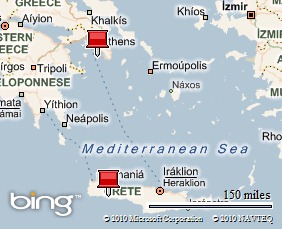
![DSC_0130[1] DSC_0130[1]](http://lh6.ggpht.com/_9GrxaFPJSiU/TEvOEV8xVxI/AAAAAAAAG00/Hs7aqTcQBWY/DSC_0130%5B1%5D_thumb%5B12%5D.jpg?imgmax=800)
![DSC_0248[1] DSC_0248[1]](http://lh5.ggpht.com/_9GrxaFPJSiU/TEvOe4tKASI/AAAAAAAAG4s/1mlh6n43H9A/DSC_0248%5B1%5D_thumb%5B1%5D.jpg?imgmax=800)
![DSC_0048[1] DSC_0048[1]](http://lh6.ggpht.com/_9GrxaFPJSiU/TEUNlwRpfVI/AAAAAAAAGrQ/jZUZe9iqGt4/DSC_0048%5B1%5D_thumb%5B4%5D.jpg?imgmax=800)
![Akropolis_by_Leo_von_Klenze[1] Akropolis_by_Leo_von_Klenze[1]](http://lh4.ggpht.com/_9GrxaFPJSiU/TEUNmdYxexI/AAAAAAAAGk0/HYc5d4Y11l0/Akropolis_by_Leo_von_Klenze%5B1%5D%5B4%5D.jpg?imgmax=800)
![DSC_0098[2] DSC_0098[2]](http://lh4.ggpht.com/_9GrxaFPJSiU/TEUNngAkz5I/AAAAAAAAGlE/2i7ffua0f9g/DSC_0098%5B2%5D_thumb%5B2%5D.jpg?imgmax=800)
![DSC_0034[1] DSC_0034[1]](http://lh4.ggpht.com/_9GrxaFPJSiU/TEUNph4Q2lI/AAAAAAAAGlU/eamNBe2HsKc/DSC_0034%5B1%5D_thumb%5B2%5D.jpg?imgmax=800)
![DSC_0071[1] DSC_0071[1]](http://lh6.ggpht.com/_9GrxaFPJSiU/TEUNrRePsjI/AAAAAAAAGlk/R8DSe9-IlGg/DSC_0071%5B1%5D_thumb%5B2%5D.jpg?imgmax=800)
![DSC_0089[1] DSC_0089[1]](http://lh5.ggpht.com/_9GrxaFPJSiU/TEUNswD8riI/AAAAAAAAGl0/UIK6wbr420I/DSC_0089%5B1%5D_thumb%5B2%5D.jpg?imgmax=800)
![DSC_0094[1] DSC_0094[1]](http://lh5.ggpht.com/_9GrxaFPJSiU/TEUNulud2BI/AAAAAAAAGmE/MpNNoHXuQrw/DSC_0094%5B1%5D_thumb%5B2%5D.jpg?imgmax=800)
![DSC_0080[1] DSC_0080[1]](http://lh3.ggpht.com/_9GrxaFPJSiU/TEUNwF41wEI/AAAAAAAAGmU/C_zFDPdL5us/DSC_0080%5B1%5D_thumb%5B2%5D.jpg?imgmax=800)
![DSC_0085[1] DSC_0085[1]](http://lh6.ggpht.com/_9GrxaFPJSiU/TEUNxkoC4SI/AAAAAAAAGmk/pgZqi2UwFBc/DSC_0085%5B1%5D_thumb%5B1%5D.jpg?imgmax=800)
![DSC_0074[1] DSC_0074[1]](http://lh5.ggpht.com/_9GrxaFPJSiU/TEUNyx0YnVI/AAAAAAAAGm0/psCkZQOQZkQ/DSC_0074%5B1%5D_thumb%5B1%5D.jpg?imgmax=800)
![DSC_0075[1] DSC_0075[1]](http://lh3.ggpht.com/_9GrxaFPJSiU/TEUN0bNAQeI/AAAAAAAAGnE/pMMBbMdSq3o/DSC_0075%5B1%5D_thumb%5B1%5D.jpg?imgmax=800)
![DSC_0082[1] DSC_0082[1]](http://lh6.ggpht.com/_9GrxaFPJSiU/TEUN1UtTEuI/AAAAAAAAGnU/q6L1aoqwpm8/DSC_0082%5B1%5D_thumb%5B1%5D.jpg?imgmax=800)
![DSC_0099[1] DSC_0099[1]](http://lh6.ggpht.com/_9GrxaFPJSiU/TEUN2lgqFSI/AAAAAAAAGnk/X7XDhkaOYi8/DSC_0099%5B1%5D_thumb%5B1%5D.jpg?imgmax=800)
![DSC_0076[1] DSC_0076[1]](http://lh3.ggpht.com/_9GrxaFPJSiU/TEUN4CgdJNI/AAAAAAAAGq0/h2GEm0hTuXw/DSC_0076%5B1%5D_thumb%5B4%5D.jpg?imgmax=800)
![DSC_0077[1] DSC_0077[1]](http://lh3.ggpht.com/_9GrxaFPJSiU/TEUN5UbQrII/AAAAAAAAGqA/KtieMs_90_0/DSC_0077%5B1%5D_thumb%5B3%5D.jpg?imgmax=800)
![DSC_0084[1] DSC_0084[1]](http://lh4.ggpht.com/_9GrxaFPJSiU/TEUN7HPezhI/AAAAAAAAGqU/6NJbyVrTumY/DSC_0084%5B1%5D_thumb%5B2%5D.jpg?imgmax=800)
![DSC_0062[2] DSC_0062[2]](http://lh6.ggpht.com/_9GrxaFPJSiU/TEUN8ga217I/AAAAAAAAGok/OUxm_NwDa2k/DSC_0062%5B2%5D_thumb%5B1%5D.jpg?imgmax=800)
![DSC_0087[1] DSC_0087[1]](http://lh3.ggpht.com/_9GrxaFPJSiU/TEUN-HbZWaI/AAAAAAAAGo0/JP71b33L9GQ/DSC_0087%5B1%5D_thumb%5B1%5D.jpg?imgmax=800)
![DSC_0086[1] DSC_0086[1]](http://lh6.ggpht.com/_9GrxaFPJSiU/TEUOAbwre1I/AAAAAAAAGpI/4axFMeJhoW8/DSC_0086%5B1%5D_thumb%5B1%5D.jpg?imgmax=800)
![DSC_0103[1] DSC_0103[1]](http://lh5.ggpht.com/_9GrxaFPJSiU/TEUOBYJ2VOI/AAAAAAAAGpY/d5Ye7gySt94/DSC_0103%5B1%5D_thumb%5B1%5D.jpg?imgmax=800)
![DSC_0102[1] DSC_0102[1]](http://lh3.ggpht.com/_9GrxaFPJSiU/TEUOCnlbpsI/AAAAAAAAGpo/nFlTX7IBNYw/DSC_0102%5B1%5D_thumb%5B1%5D.jpg?imgmax=800)
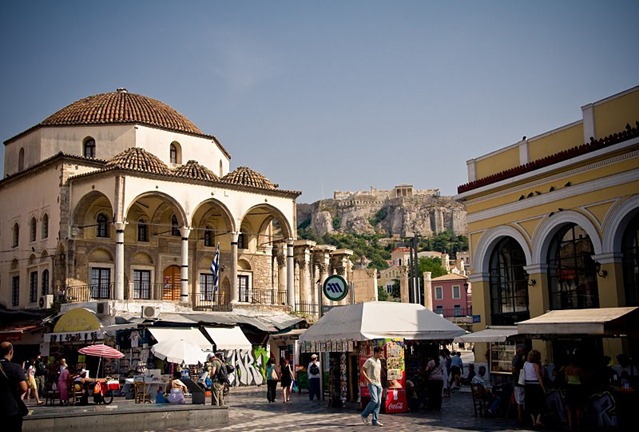
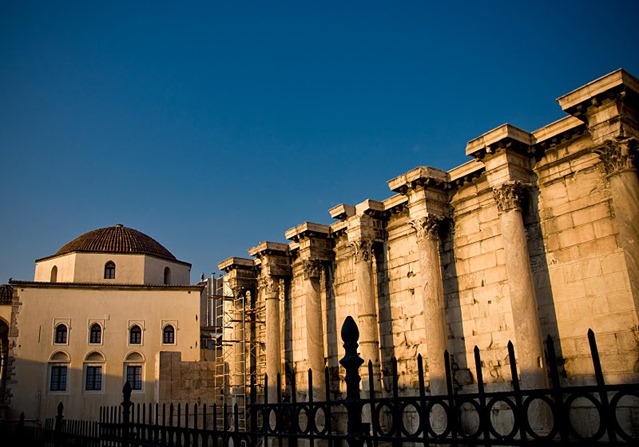
![DSC_0675[1] DSC_0675[1]](http://lh5.ggpht.com/_9GrxaFPJSiU/TD5cZWDpI6I/AAAAAAAAGhI/DholoWbFCIQ/DSC_0675%5B1%5D%5B6%5D.jpg?imgmax=800)
![DSC_0029[1] DSC_0029[1]](http://lh4.ggpht.com/_9GrxaFPJSiU/TD5caOZt2KI/AAAAAAAAGhQ/j2aBLna0Zag/DSC_0029%5B1%5D%5B3%5D.jpg?imgmax=800)
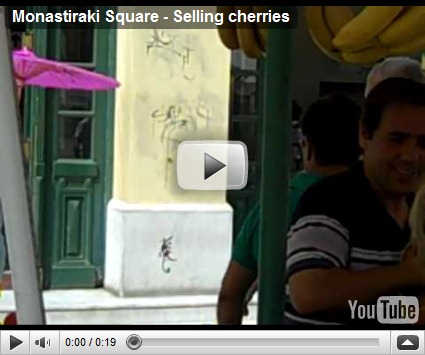
![DSC_0021[3] DSC_0021[3]](http://lh5.ggpht.com/_9GrxaFPJSiU/TD5ca1V3V0I/AAAAAAAAGhY/3ljF_TCc3uI/DSC_0021%5B3%5D%5B4%5D.jpg?imgmax=800)
![DSC_0024[1] DSC_0024[1]](http://lh3.ggpht.com/_9GrxaFPJSiU/TD5cbpr-GbI/AAAAAAAAGhg/2JvBJuywSXQ/DSC_0024%5B1%5D%5B4%5D.jpg?imgmax=800)
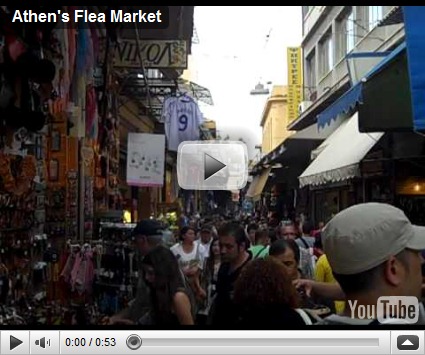
![DSC_0043[1] DSC_0043[1]](http://lh4.ggpht.com/_9GrxaFPJSiU/TD5cdq3na8I/AAAAAAAAGhw/yeaL176sIBw/DSC_0043%5B1%5D%5B5%5D.jpg?imgmax=800)
![DSC_0035[2] DSC_0035[2]](http://lh6.ggpht.com/_9GrxaFPJSiU/TD5ceB9_t0I/AAAAAAAAGh4/zywbYVjc2DE/DSC_0035%5B2%5D%5B5%5D.jpg?imgmax=800)
![DSC_0107[2] DSC_0107[2]](http://lh5.ggpht.com/_9GrxaFPJSiU/TD5ce_5b6JI/AAAAAAAAGiA/jZFGA9Ro8qw/DSC_0107%5B2%5D%5B4%5D.jpg?imgmax=800)
![DSC_0020[2] DSC_0020[2]](http://lh4.ggpht.com/_9GrxaFPJSiU/TD5cgFFV6XI/AAAAAAAAGiI/ODd3xXx8E_4/DSC_0020%5B2%5D%5B6%5D.jpg?imgmax=800)
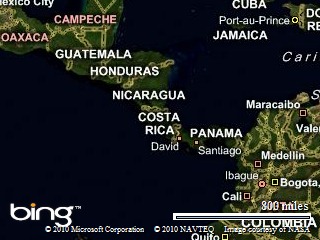
![DSC_0001[1] DSC_0001[1]](http://lh6.ggpht.com/_9GrxaFPJSiU/TD0df7lhUfI/AAAAAAAAGfo/k3ECYnr9Ofc/DSC_0001116.jpg?imgmax=800)
![DSC_0440[1] DSC_0440[1]](http://lh4.ggpht.com/_9GrxaFPJSiU/TD0dgW1xn6I/AAAAAAAAGfw/OPsidSpHoMk/DSC_044017.jpg?imgmax=800)
![DSC_0441[1] DSC_0441[1]](http://lh3.ggpht.com/_9GrxaFPJSiU/TD0dg---2mI/AAAAAAAAGf4/_FGcurCzkrc/DSC_044116.jpg?imgmax=800)